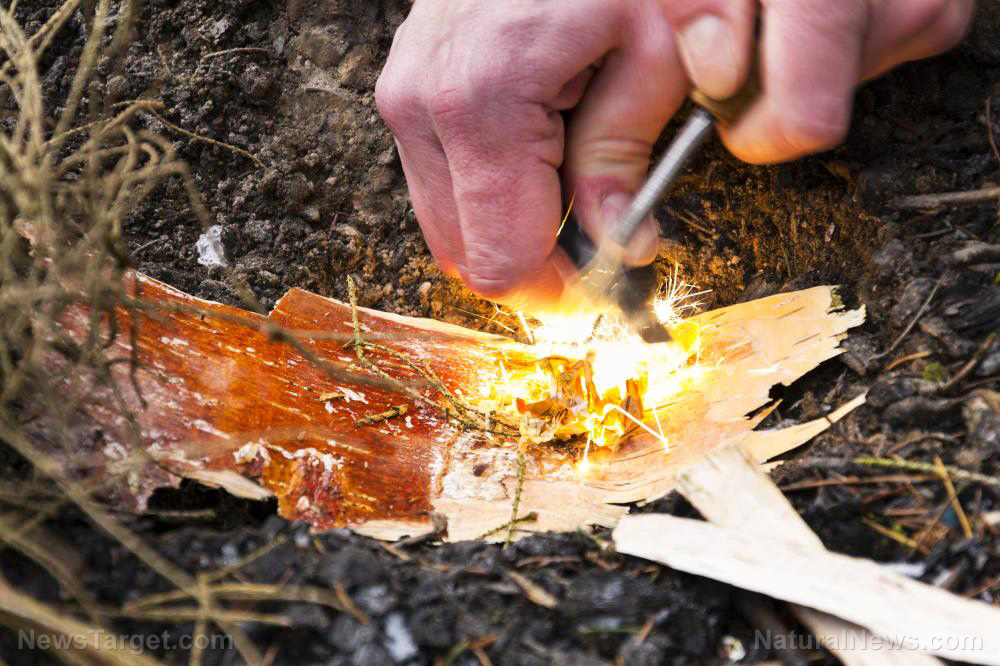Survival myth BUSTED: You can’t start a fire using a lemon
01/05/2019 / By Mary Miller

You may have heard of a popular survival myth saying that you can start a fire with nothing but a lemon and a few other items, such as copper clips, zinc nails, wire, and steel wool. If you think this sounds too good to be true, you’d be right. While the idea might seem plausible in theory, real-life application and a little logic can quickly show us that it simply isn’t possible to start a fire using a single lemon. (h/t to Survivopedia.com.)
While preppers should always be open-minded about learning new survival techniques, they should also maintain a healthy degree of skepticism. This is why it is important to practice your survival skills first in your everyday life rather hoping to pull them off when SHTF, only to have your strategies fail when you need them the most. Hinging your survival plan on a trick you’ve only heard of once but never actually tried is a surefire recipe for disaster.
The science behind starting fires using lemons
In theory, there is some sound logic behind the idea of starting fires with lemons. It takes the simple science class experiment of a lemon battery and attempts to apply a practical use for it. Lemon batteries do exist and they do work, to some extent. They can produce a small amount of electricity, but that amount of electricity simply isn’t enough to start an actual fire. It is said that the lemon should first be warmed up beforehand using friction, but this makes very little difference. The lemon on its own does not generate any electricity, no matter how much you warm it up.
In order to build a simple battery, you will need some acid and a few zinc and copper electrodes. In this case, the lemon is used as a substitute for the acid due to lemon juice being acidic in nature. Galvanized nails are coated with zinc. These nails, along with a few copper clips serve as the electrodes. The two electrodes should then be connected with a conductive material. The idea is that the acid should cause the zinc to dissolve, leading to a chemical reaction that should generate electricity. This electricity should theoretically be enough to ignite the steel wool.
Why it doesn’t work
A single lemon can provide around one milliamp and 0.7 volts. Simply put, this isn’t nearly enough electricity to ignite the steel wool. You’d have more luck starting a fire with an ordinary 9-volt battery as these can generate up to 500 milliamps in short bursts. Alternatively, you could theoretically use multiple lemons and connect them all together with electrodes and conductive wires, but this solution is far from practical. If you happen to be stranded in the woods and in need of a fire, chances are that you probably won’t be carrying around a bag of lemons, let alone the other materials you’d need to start a fire.
Other practical ways to start fires
There are several other methods you can use to start a fire that are much simpler and more efficient. The most straightforward way is to use matches or a lighter. These are easier to carry around than lemons, electrodes and wires. If you don’t have any of these, you can be resourceful and make use of other common items. Magnifying glasses and water bottles can be used to focus sunlight on flammable objects to start a small flame. For nighttime fires, you can strike flint and steel against each other, but this will require some practice to pull off correctly. (Related: PREPPING 101: Top 11 ways to start a fire.)
Learn more tips on how to build a proper fire by going to Preparedness.news.
Sources include:
Tagged Under: bug out, building fires, campfires, camping, fire, firestarting, hoax, off grid, outdoors, preparedness, prepper, prepping, self sufficiency, self-reliance, SHTF, survival, survival myth, survival skills, survivalist



















